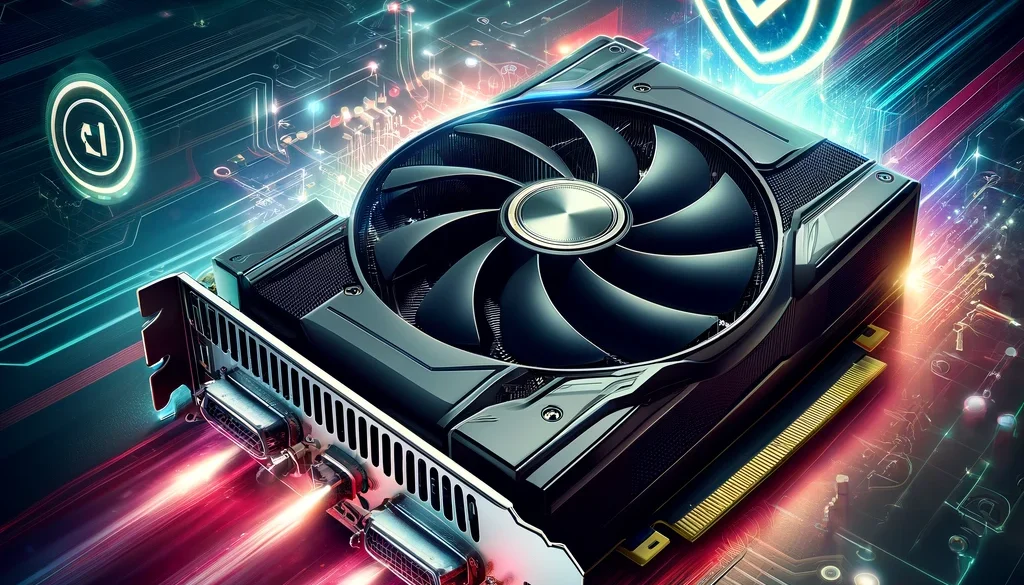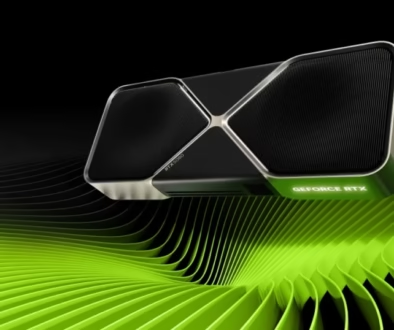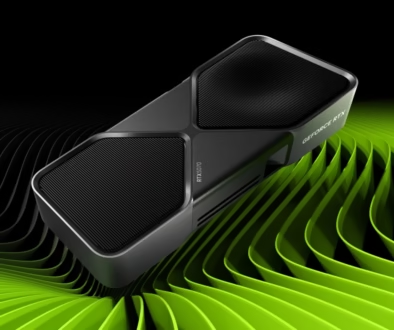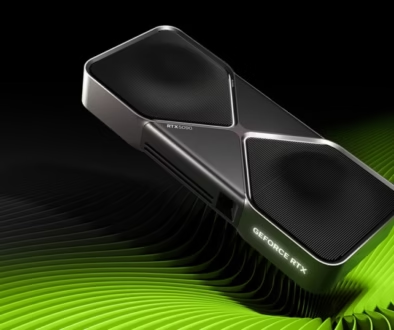Beginner’s Guide to Safely Overclocking Budget GPUs
When you purchase through links on our website, we may earn an affiliate commission.

Hey there, fellow budget gamers! Did you know that with just a few tweaks, you can squeeze up to 15% more performance out of your wallet-friendly GPU – for free? I know, it sounds too good to be true, but trust me, I’ve been there. When I first got my hands on a budget graphics card, I was thrilled… until I realized it wasn’t quite hitting the frame rates I’d hoped for in my favorite games.
That’s when I discovered the world of overclocking. Now, I know what you’re thinking – “Isn’t that dangerous? Won’t I fry my new GPU?” Well, I had the same fears, but after countless hours of research and careful experimentation, I’ve learned how to safely push my budget GPU to its limits without turning it into an expensive paperweight.
In this guide, I’m going to walk you through everything I’ve learned about overclocking budget GPUs. We’ll cover the basics, the tools you’ll need, and a step-by-step process to boost your performance without risking your hardware. So, grab a drink, get comfy, and let’s dive into the exciting world of budget GPU overclocking!
Understanding Overclocking Basics
Alright, let’s start with the basics. What exactly is overclocking? Well, in simple terms, it’s like giving your GPU a strong cup of coffee – you’re pushing it to work faster than its default settings. When you overclock, you’re increasing the clock speeds of your GPU’s core and memory, which can lead to better performance in games and other graphics-intensive tasks.
Now, you might be wondering, “If overclocking is so great, why don’t manufacturers just set the speeds higher by default?” Good question! The thing is, every GPU chip is a little different – it’s called the “silicon lottery.” Some chips can handle higher speeds better than others, so manufacturers play it safe with conservative default settings.
This is actually great news for us budget GPU owners! Often, lower-end cards have more overclocking headroom because manufacturers want to differentiate them from their pricier models. It’s like finding hidden treasure in your budget GPU!
But here’s the catch – and it’s an important one – overclocking does come with some risks. Push too hard, and you could see system instability, crashes, or in worst-case scenarios, hardware damage. That’s why we’re going to focus on safe, gradual overclocking. Remember, slow and steady wins the race!
Essential Tools for GPU Overclocking
Before we jump into the nitty-gritty of overclocking, let’s talk about the tools we’ll need. Don’t worry, you won’t have to break out your wallet again – everything we need is free!
First up, we need overclocking software. My personal favorite is MSI Afterburner. It’s user-friendly, works with most GPUs (not just MSI ones), and has a ton of features. But if you prefer alternatives, EVGA Precision X1 and AMD Radeon Software are also great options.
Next, we need some monitoring tools. GPU-Z is fantastic for keeping an eye on your GPU’s vitals, like clock speeds, temperatures, and voltages. I also love HWiNFO for a more comprehensive system overview.
For stress testing, FurMark is my go-to. It’s like a torture test for GPUs – if your overclock can survive FurMark, it can handle pretty much anything. 3DMark is also great for benchmarking your performance gains.
Lastly, don’t forget about driver update tools. Keeping your GPU drivers up-to-date is crucial for stability, especially when overclocking. Most GPU manufacturers have their own update software, or you can use Windows Update in a pinch.
Preparing Your System for Overclocking
Okay, now that we’ve got our tools ready, it’s time to prep our system. Think of this as warming up before a workout – it’s essential for avoiding injuries (or in our case, crashes and instability).
First things first, update those GPU drivers! I can’t stress this enough. One time, I spent hours trying to figure out why my overclock was unstable, only to realize I was running drivers from six months ago. Don’t be like me – always use the latest drivers.
Next up, let’s talk cooling. Your GPU is going to be working harder, which means it’ll generate more heat. Make sure your case has good airflow. I learned this the hard way when I tried overclocking in a case with only one case fan – talk about a hotbox! If you can, add some extra case fans. Your GPU will thank you.
Now, take a look at your power supply. Overclocking increases power consumption, so make sure your PSU is up to the task. If you’re rocking a no-name 350W power supply from 2010, you might want to consider an upgrade before pushing your GPU.
Lastly, let’s establish a baseline. Run some benchmarks and make note of your current performance and temperatures. This will help us track our progress and make sure we’re actually gaining performance, not just generating more heat.
Step-by-Step Guide to Overclocking Your Budget GPU
Alright, it’s time for the main event! Let’s start overclocking. Remember, we’re going for safe and steady here – no need to go all “Fast and Furious” on your poor GPU.
- Fire up your overclocking software (I’ll be using MSI Afterburner for this guide) and look for the core clock slider.
- Increase the core clock by small increments – I usually start with +50MHz.
- Run a stress test for about 15 minutes. If it passes without any crashes or artifacts (weird visual glitches), great! If not, dial it back a bit.
- Repeat steps 2 and 3, gradually increasing the core clock until you start seeing instability.
- Once you find the highest stable core clock, it’s time to tackle the memory clock. Follow the same process, starting with small increments (say, +100MHz for memory).
- After you’ve maxed out both core and memory clocks, run a longer stress test (30 minutes to an hour) to ensure stability.
Now, while overclocking is a great way to boost your FPS, it’s not the only trick up our sleeve. If you’re looking to maximize your budget GPU’s performance even further, check out our guide on how to squeeze every FPS from your low-end graphics card. It’s packed with additional tips and tweaks that can complement your overclocking efforts and help you get the most out of your hardware.
Remember, every GPU is different. My budget RX 570 could handle a +150MHz core and +250MHz memory overclock, but yours might be different. Don’t get discouraged if you can’t push it as far – any performance gain is a win!
Fine-tuning Voltage and Power Limits
Now, here’s where things get a bit more advanced. Voltage and power limits are like the fuel for your GPU’s engine. More fuel can mean more performance, but it also means more heat and potential risk.
For most budget GPUs, I actually recommend leaving voltage alone and focusing on the power limit. Increasing the power limit gives your GPU more headroom to maintain its boost clocks. Try increasing it by 10% and see how it affects your stability and performance.
If you do decide to touch the voltage, be very careful. Small increases (like +25mV) can help stabilize an overclock, but they also increase heat output significantly. Always prioritize temperatures over small performance gains.
One time, I got a bit overzealous with voltage on my old GPU. Let’s just say the burning smell was not a pleasant experience. Learn from my mistakes – respect the voltage slider!
Monitoring and Stress Testing Your Overclocked GPU
Congrats! You’ve overclocked your GPU. But we’re not done yet – now it’s time to make sure it’s actually stable.
Run FurMark for at least 30 minutes, keeping an eye on temperatures. Ideally, you want to stay under 80°C, but anything under 85°C is generally safe for short periods.
Watch out for any signs of instability:
- Crashes or blue screens
- Graphical glitches or artifacts
- Sudden performance drops
If you see any of these, dial back your overclock a bit.
Don’t just rely on synthetic benchmarks, though. Test your overclock in real-world scenarios – play your favorite games for a few hours. I once had an overclock that was “FurMark stable” but crashed every time I played The Witcher 3. Real-world testing is crucial!
Troubleshooting Common Overclocking Issues
Even with careful overclocking, you might run into some issues. Don’t panic – it’s all part of the process!
If you’re seeing crashes, try reducing your core clock. Artifacts or visual glitches? That’s usually a sign your memory overclock is too high.
Sometimes, you might even see a performance decrease. This can happen if your GPU is thermal throttling – basically, it’s getting too hot and slowing itself down. If this happens, focus on improving cooling before pushing clocks higher.
Remember, there’s no shame in resetting to default if things get too unstable. I’ve had to do it plenty of times!
Best Practices for Maintaining Your Overclocked GPU
You’ve successfully overclocked your budget GPU – awesome job! But the work doesn’t stop here. To keep your overclocked GPU running smoothly:
- Keep those drivers updated! New drivers can sometimes affect stability, so be prepared to tweak your overclock.
- Keep it clean! Dust buildup can lead to higher temperatures. I give my GPU a gentle dusting every couple of months.
- Don’t be afraid to adjust. Some games might need you to dial back the overclock a bit for stability.
- Monitor temperatures regularly. If you notice them creeping up over time, it might be time to reapply thermal paste.
Conclusion
And there you have it – your complete guide to safely overclocking your budget GPU! Remember, the key word here is “safely.” It’s tempting to push for every last MHz, but stability should always come first.
Start small, be patient, and enjoy the free performance boost! Even a modest overclock can breathe new life into your budget GPU, letting you crank up those graphics settings or enjoy smoother framerates.
I’d love to hear about your experiences with overclocking. Did you unlock hidden potential in your budget GPU? Any tips or tricks to share? Drop a comment below and let’s keep the conversation going!
Happy overclocking, and may your framerates be high and your temperatures low!



Top 5 Budget-Friendly Graphics Cards for 1080p Gaming in 2024 -
August 22, 2024 @ 9:18 am
[…] like I had unlocked some hidden potential. If you’re thinking of overclocking, check out this beginner’s guide to do it safely. Just be careful, though; pushing it too far can lead to overheating or system […]
Ray Tracing vs. DLSS: Which Technology Impacts FPS More in 2024? -
August 28, 2024 @ 12:48 am
[…] playing, and your personal preferences. If you’re feeling adventurous, you might even consider safely overclocking your GPU to squeeze out a bit more performance. Don’t be afraid to […]
How RAM Affects Budget GPU Performance: A Gamer's Guide -
August 31, 2024 @ 7:20 am
[…] budget GPU even further, you might want to consider overclocking. But be careful! Check out this beginner’s guide to safely overclocking budget GPUs for tips on doing it without frying your […]
Understanding GPU Specs: A Comprehensive Guide for Budget Gamers in 2024 -
September 4, 2024 @ 4:00 pm
[…] cool trick for budget gamers is overclocking. By tweaking your GPU’s clock speeds, you can squeeze out extra performance for free. Just be […]
The Ultimate Guide to Buying Used Budget Graphics Cards in 2024 -
September 9, 2024 @ 11:37 am
[…] Overclocking is another potential minefield. Some folks push their cards to the limit, trying to squeeze out every last drop of performance. In the wrong hands, it’s like redlining a car engine constantly – something’s bound to give eventually. […]
The Impact of VRAM on Gaming Performance: How Much Do You Need in 2024? -
January 26, 2025 @ 12:37 pm
[…] If you’re trying to squeeze every last frame out of your GPU, you might want to explore safe overclocking techniques for budget GPUs, which can provide additional performance gains without requiring more […]
NVIDIA GeForce RTX 5080 Review: The Next Big Leap or a Gimmick?
February 9, 2025 @ 5:53 am
[…] of the most surprising aspects of the RTX 5080 is its overclocking potential. Unlike previous generations, which offered limited headroom for manual tuning, the RTX […]